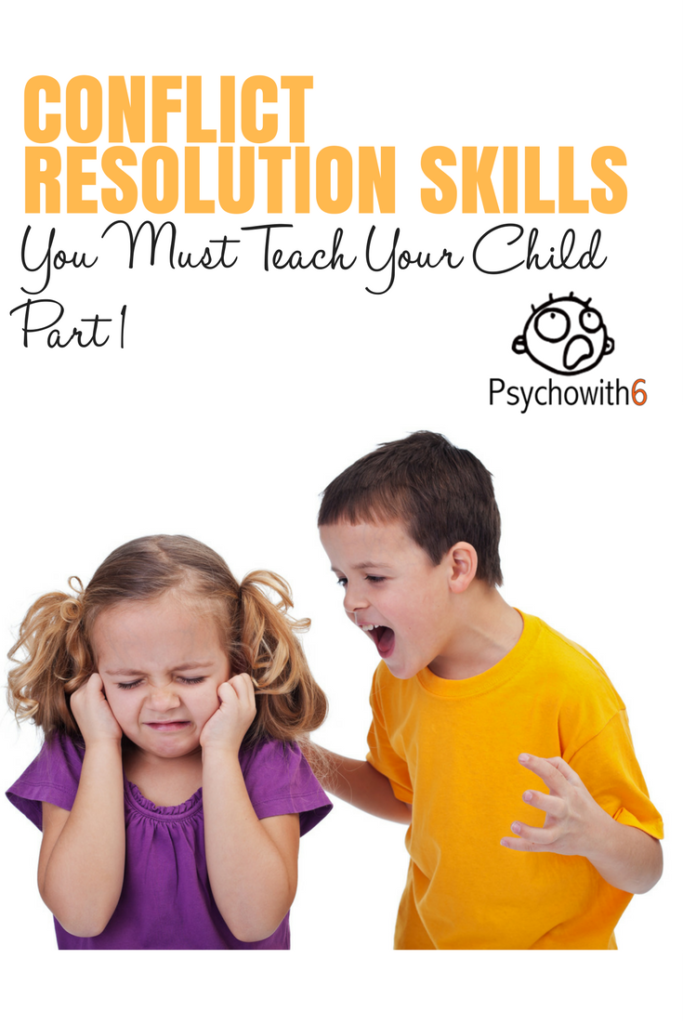I consider conflict resolution skills to be with one of the four R’s. We have reading, writing, ‘rithmetic, and resolution of conflict. Poor conflict resolution skills are the number one cause of divorce. They result in $359 billion in lost work hours. In fact, 25 to 40% of a manager’s time is spent on resolving conflict in the workplace.
I have had plenty of opportunities to teach these skills in my own family. I have five boys and one girl and my daughter has had more physical fights then all the rest put together. Go figure! Moms are the world’s best mediators, but we often do the work of mediation without teaching kids the concepts. Before I go any further I want to define conflict. I think of it in literary terms.
“Conflict is when someone stands in the way of getting what you want.”
I want to begin in this episode (which will be part one of two) to share with you the acronym we’ll be using: BLT. The BLT method of conflict resolution is breathe, learn, talk.
BREATHE
First breathe. This means stop and think. Calm down and think of the conflict in terms of win-win. Cain in the Bible is the first example of someone who thought in terms of win-lose. He thought only one of them could please God, when that wasn’t the case. We still make that mistake today. What does God say about win-win versus win-lose? In Philippians 2:3 – 4, He says, “Do nothing out of selfish ambition or vain conceit. Rather, in humility value others above yourselves, not looking to your own interests but each of you to the interests of the others.” In Matthew 5:9 we read, “Blessed are the peacemakers, for they will be called children of God.”
When your kids stop to breathe, they should ask themselves this question: Do I want to be right or do I want to improve the relationship? You can coach them in the middle of a conflict by asking them this question as well. We’ve all been trained to seek compromise in an effort to achieve win-win. Compromise means both parties give up something and sometimes compromise is a great solution. But sometimes it isn’t the best one for win-win. Imagine that two people are fighting over one remaining orange. They compromise and cut it in half. One person is now able to make only a very small amount of orange juice and the other doesn’t have enough of the orange peel shavings to add to a dessert recipe. They could have both used one organge.
To help kids identify conflicts and win-win solutions, practice with books and movies. Every book and movie has a conflict to discuss. There aren’t always simple solutions, but it’s a great exercise. Some books and movies have a difficult person, which is a separate topic that I’m going to be writing a book about next year.
In order to resolve conflict, you also have to know whom you’re in conflict with. This is necessary for a win-win solution. We have to consider others’ needs.
Gender Differences
Our culture says there aren’t true gender differences (and it’s true that they aren’t universal), but I think of men as wrenches and women as stethoscopes. Men want to quickly solve problems and women are most concerned with heart issues. For example, men’s number one marital complaint is nagging and complaining on the part of their wives, while women’s is not having their feelings validated. Men figure if they’ve discussed the problem, it’s solved, and women feel that if they haven’t come to a mutually beneficial solution that they need to keep bringing it up.
On one occasion, I told my husband that a friend had upset me. I wanted to talk out my feelings, but my husband told me just to stop talking to her. He then returned to reading the paper. It is possible to have both a solution and a time of relationship building, however. Fortunately, I know to say, “I’m not asking you to solve the problem, but to listen.”
Another gender difference is men’s desire for respect from their wives and women’s desire for love from their husbands. Often the conflict continues as both parties wait for the other to give them what they want. Of course, the conflict can be resolved in a win-win way if both husband and wife meet their spouse’s needs. Without understanding these gender differences, there can be no win-win solution. I already see these gender differences in the conflicts between my teens.
Personality Differences
A second important difference between people is personality. I use Florence Littauer’s Personality Plus typology of four types instead of Myers-Briggs because it is much easier to remember. You only have four personalities to remember instead of 16 and it’s much easier for children to understand. The four personalities are Popular Sanguine, Powerful Choleric, Perfect Melancholy, and Peaceful Phlegmatic. I studied ornithology in college and I thought it made sense to choose birds to represent the personality types, especially because it could help my kids to remember them.
The first personality I’ll describe is the Popular Sanguine. I chose the peacock to represent the Popular Sanguine because the peacock is colorful, loud, and draws attention to itself. The Popular Sanguine also likes attention, tends to wear bright, colorful clothing, and can be loud. The Popular Sanguine is an extroverted talker. They like to have fun, and because cleaning and repetitive work isn’t fun, they’re disorganized. A person from the Bible who was a Popular Sanguine is Peter. He thought walking on water seemed like fun and often spoke without thinking.
The Popular Sanguine more than anything else wants approval and compliments. A single compliment is like eating one Pringles potato chip. It’s simply stokes the appetite for more. Criticizing the Popular Sanguine or keeping them from having fun will likely result in conflict.
The second personality I wanted to describe for you is the Powerful Choleric. I chose the blue jay to represent this personality. If you’ve ever seen a blue jay arrive at a birdfeeder, you see all the other birds scatter. They dominate the feeder. The Powerful Choleric is an ambitious personality, often referred to as Type A. They desire control of themselves and often of other people. They’re the most likely to have a hot temper. They generally believe they are right about things and are frustrated by lazy people. If you keep a Choleric from having control or are lax in your work, you are likely to have conflict with them. Like the Popular Sanguine, this personality is a social, extroverted type. The apostle Paul is an example of this personality in the Bible. He told Peter he was wrong and then wrote that he did.
The Perfect Melancholy is the third personality type I will discuss with you today, and this personality is represented by the Canada goose. This personality wants perfection. The type tends to be very organized and like the Canda goose, everything is in order. Because this personality wants perfection, they are often depressed. Interestingly, the Canada goose appears to be depressed upon losing its lifelong mate. This personality can be musically inclined. They also want people to be thoughtful and sensitive to their needs. This is an introverted personality who often conflicts with the Popular Sanguine. The Perfect Melancholy is often reluctant to give the Popular Sanguine compliments until they are perfect. And they often Popular Sanguines as being insensitive to them. Moses in the Bible was this personality type — a perfectionist prone to depression. He didn’t want to be in the limelight as God’s spokesperson or even the leader of the Israelites.
The final personality I’ll discuss today is the Peaceful Phlegmatic personality. I chose the turkey to represent this personality because everyone likes them. Everyone loves the Peaceful Phlegmatic. More than anything the Peaceful Phlegmatic wants peace. This type avoids conflict the most. This is an introverted, easy-going personality and not an ambitious personality. They tend to be easily satisfied with their lot in life and like easy work. As a result, they are often disrespected by Powerful Cholerics. Even though they don’t meet the demands of Powerful Cholerics, they want respect. If they don’t get respect, they can become passive-aggressive. Abraham was a Peaceful Phlegmatic. He preferred to let Pharoah have has wife rather than having a conflict over it.
Learning these personality differences has helped reduce conflict in my family. I used to assume that my husband was trying to make me miserable by controlling me. Eventually I learned that when he felt out of control in his work or other areas of his life, he proceeded to try to control me. Personality types have also helped me immensely in understanding and relating to my children. I honestly believed that one of my sons was depressed or obstinate when he described most of his activities as fine. My personality believes that fine is a bad thing. Our family has learned to understand one another. Teaching our children their personalities and the needs and wants of other personalities can drastically limit the amount of conflict they experience in dealing with other people.
I am going to end this episode on conflict resolution skills you must teach your children here and I will pick it up again next week. We will discuss the learn and talk aspects of the BLT method.
If you would like to take a questionnaire to help you determine your primary personality type or if you would like to have your children take one, try this PDF version. I would love to hear what your personality type is! I am primarily Popular Sanguine and secondarily Powerful Choleric








Live the way you explained the different personality types. I was able to tell which one my daughter was. Thank you so much for this and I look forward to hearing the next podcast!
I’m so glad it made sense to you! I’m looking forward to sharing part 2. 🙂